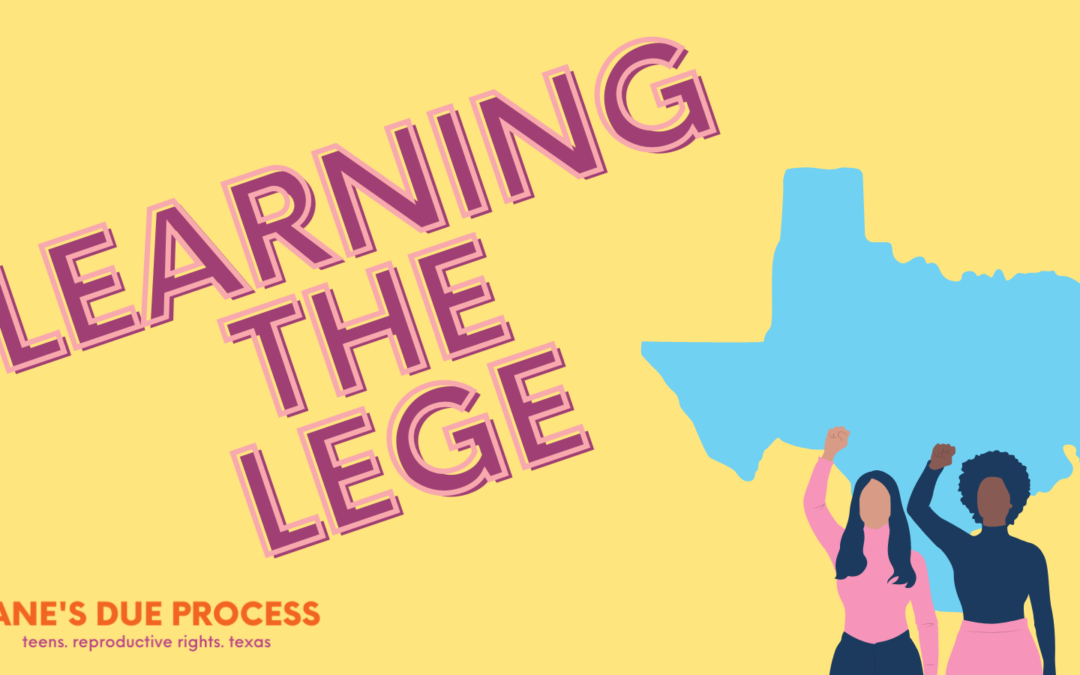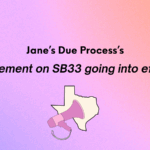In the last post we walked through how to track a bill as it moves through the legislative process — but what’s the process? Knowing what happens at each step will help you know when you need to show up and take action during the Texas legislative session.
There are two chambers to the Texas legislature: The House of Representatives and the Senate. Bills must move through both chambers to be passed on to the Governor and signed into law.
Step 1: File the Bill
This is when the legislator alerts everyone that they have a bill they want passed. If it’s introduced by a representative in the house it’s given a number like HB 1234, while if it’s introduced by a senator in the senate it’s given a number like SB 5. Often a senator and representative will coordinate to introduce a House version and a Senate version, which becomes important later in the process.
Legislators can file bills for the first 60 days of regular session.
Once the bill has been filed it gets what is called a “first reading,” which means that a one-line summary of what the bill does is read from the floor of the chamber in which it is introduced (House or Senate) before being assigned to committee.
SIDE NOTE: What’s a committee?
A committee is a group of legislators appointed to consider legislation pertaining to a specific issue. Committees include Agriculture and Livestock, Human Services, Public Health, Public Education, and Environmental Regulation. Check out the list of committees and learn more here.
Step 2: Committee Hearings
This is one of the places a bill can “die,” failing to move forward toward becoming a bill. The committee has the power to decide which bills it will be considered, which means that the committee can choose to not give the bill any consideration.
Should the bill get a hearing, then the committee can invite public testimony regarding the bill. This is one of those moments when people for or against the bill will ask their supporters to testify, either providing written testimony or attending the hearing and giving testimony in person. This will be modified in 2021 because of the pandemic.
After the bills have had hearings, the committee decides which ones to pass to the next step — sometimes you’ll hear folks say a bill “passed out of committee.” That’s what this is. You may also hear someone say that a bill “died in committee.” That’s because the committee can decide to take no further action on a bill after its hearing, at which point it stops moving forward in the process.
Step 3: Floor Action
Should a bill get passed out of committee, it will go to Calendars, which decides when it will get a second reading and floor debate. The bill summary is once again read from the floor of the chamber, and then members of that chamber (House or Senate) can debate the bill (speak from the microphone with remarks in favor or against) and offer amendments (changes to the bill that make it more favorable to them). Each amendment must be approved by the majority of the members to go into effect. Once the bill debate and amendment process is done, the members vote on whether or not to pass the bill. If they decide to pass it, it goes to what is known as third reading. Upon third reading members can still offer amendments, but they have to be approved by 2/3 of the members, a higher bar to meet. Then the chamber votes on the bill with all passed amendments. If it passes, it’s still not done…
Step 4: The Next Chamber
Bills started and approved in the House must be passed by the Senate and vice versa. So once the chamber goes through the process, the bill goes to the other chamber to go through the same process again. So…everything above times 2 (except the Senate doesn’t have a Calendars Committee — they just vote on whether or not a bill gets a second reading in their chamber). And they can also add amendments to the bill which then leads to…
Step 5: Resolving Any Differences
If the bill comes back to the chamber where it started without any changes, it is considered passed and goes to the Governor to either sign into law or veto (meaning the Governor says, “Nope!”). If it comes back with amendments from the other chamber, that chamber could decide to just pass it with the changes. If they don’t want to do that, a conference committee is convened to work out the differences, at which point they ask if the final version is approved by both groups and, if so, the bill goes to the Governor to either be signed or vetoed.
Step 6: Governor’s Desk
Once a bill has made it all the way through all these steps, it goes to the Governor! The Governor can sign the bill into law or veto it. The Governor can also just leave the bill alone, and after 10 days it automatically becomes law.
The tl;dr on when a bill can die is:
- In committee: The committee can decide not to consider the bill at all, or it can consider the bill and decide not to pass it out of committee to the full legislative chamber.
- On the floor: During floor debate in the House or Senate, a bill can be tabled (meaning to postpone or suspend consideration until someone starts it back up again, probably never), or it can fail to pass.
- In a committee of the opposing chamber: Once a bill passes the House or Senate it goes to committee in the opposite chamber, and that committee can decide not to consider it or not to pass it.
- On the floor of the opposing chamber: A bill could pass the House but fail to pass the Senate or vice versa.
- On the Governor’s desk: The Governor can decide to veto the bill once it has passed the legislature.
And all of this must happen before sine die (a Latin phrase meaning “without a day”), which is the last day of the regular session — this year that day is May 31, 2021, and the legislators can work right up until midnight. Bills are sometimes killed by running out the clock, as with the famous Wendy Davis filibuster of 2013.
Want to receive action alerts and updates about all things youth reproductive rights from Jane’s Due Process throughout the 2021 Texas legislative session? Click here to sign up!



